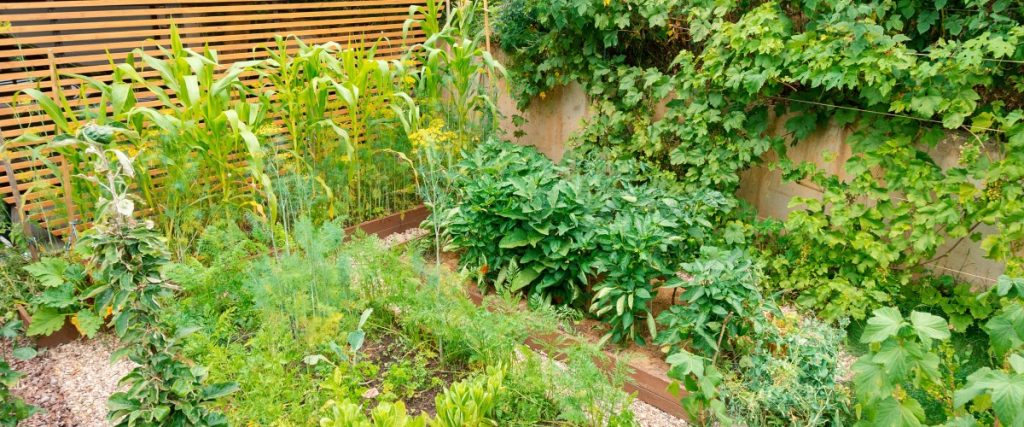Homesteading is steadily gaining popularity worldwide as more people are looking for ways to simplify their lives, reduce consumption and become more self-sufficient.
The traditional homesteading definition is outdated and may lead you to believe you need to move to a farm in the country to become a homesteader.
But this is not the case. Urban homesteading in your backyard is a great way to get started.
In this article, we look at where and how to start homesteading, and provide some fun backyard homestead ideas to inspire you.
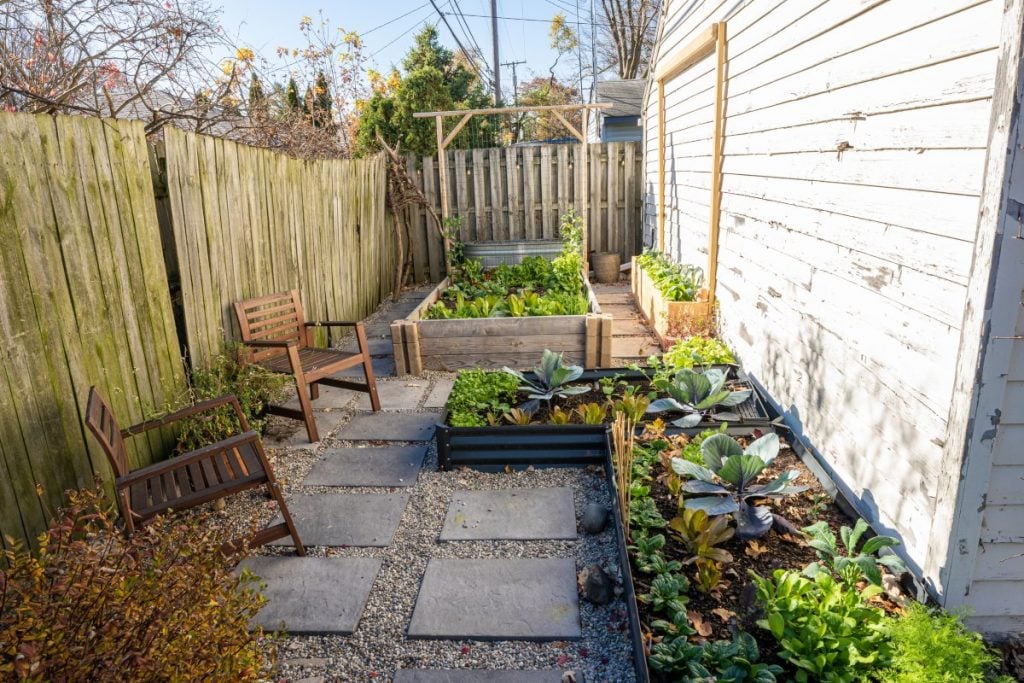
Where is the Best Place to Start a Homestead?
The best place to start homesteading is right where you are currently. You can get started and take small steps to be more sustainable and self-sufficient, even if you live in an apartment.
Many people dream about moving out of the city to a large, off-grid property to homestead.
But this is often not the best place to start homesteading.
Start with a small homestead to gain some knowledge and get a few skills under your belt. It makes it easier if or when you make the big move.
You will have a better idea of what you want to achieve and can plan and prioritize accordingly.
It will also help you find the right property for your specific needs and quickly create a successful homestead farm.
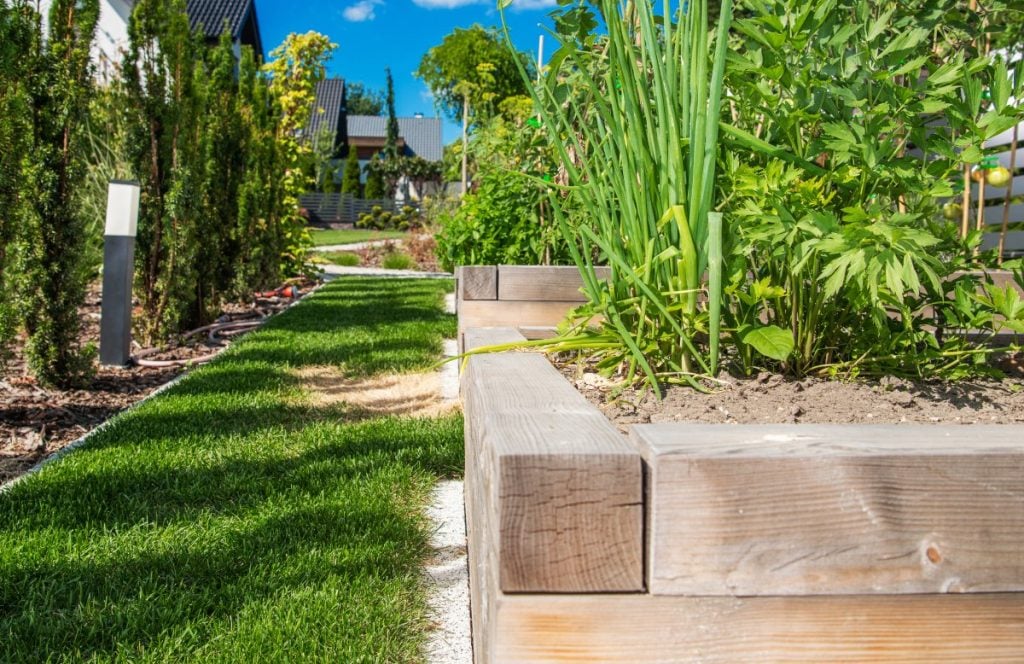
How Do You Homestead in the Suburbs?
Are you wondering how to homestead in the suburbs? The first thing you need to do is to decide what you want to achieve.
There’s no wrong or right way to homestead, and how far you take it will depend on you.
It is not always easy to decide. Many potential homesteaders want to “go big” with vegetable gardens, orchards, animals, preserving, etc.
Meanwhile, others are happy to keep it simple and grow herbs, bake bread, and recycle.
If you live in the suburbs and want to try as much as possible, you need to assess your property to see what you have room for and research what local laws will allow.
Township laws and homeowner association rules may limit your suburban homesteading plans.
Make sure you research the laws in your area so that you keep your neighbors happy and don’t get fined.
Many homeowner associations will only allow productive gardens in backyards, and raising animals may not be allowed in your area.
However, there are plenty of fun homesteading ideas that you can implement in any backyard homestead, and you don’t need a lot of money to get started.
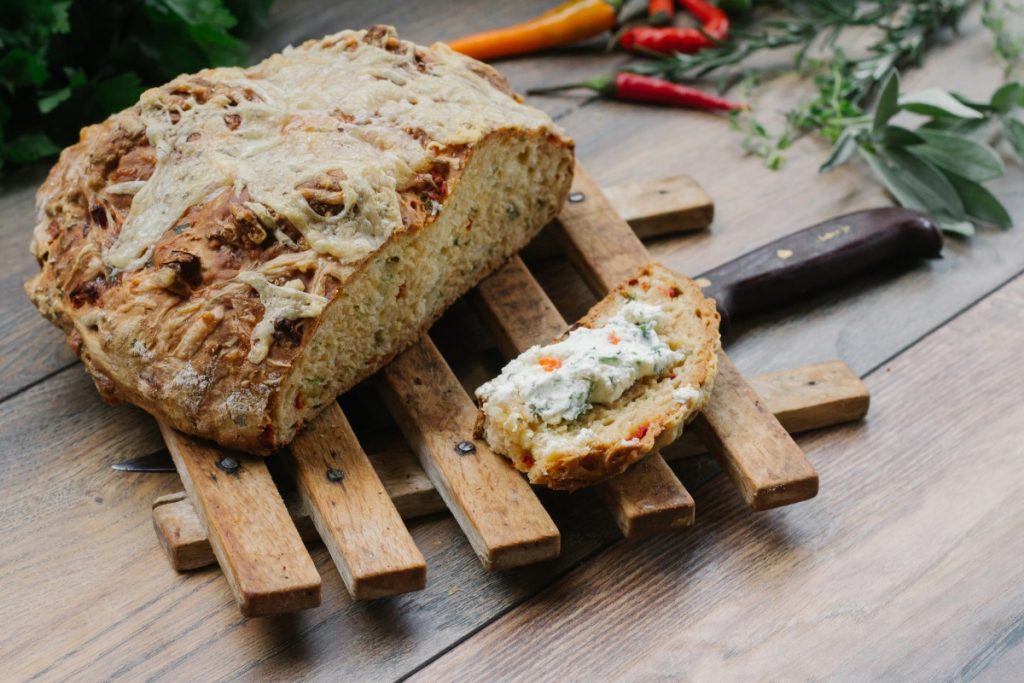
How Do You Homestead in Your Backyard?
When homesteading, the aim is to live a simpler, more sustainable and more self-sufficient lifestyle.
Thus it makes sense that your backyard homestead activities should be steps to help you achieve this lifestyle.
What Does Every Homestead Need?
There are a few things that every backyard homestead should have, and setting these up is the best way to start your backyard homestead.
1. A Growing Space
Growing vegetables and herbs is a way to start backyard homesteading. Your plants will need light to thrive, so a sunny growing space is required.
You don’t need a large area and can plant vegetables in raised beds or containers, and a sunny kitchen windowsill is ideal. Vertical planting is an excellent way to maximize space if you have a small backyard
2. A Water Source
Every homestead needs a constant, reliable water source, even backyard homestead gardens.
There are several ways that a backyard homesteader can capture, redirect or save water to save money and live more sustainably.
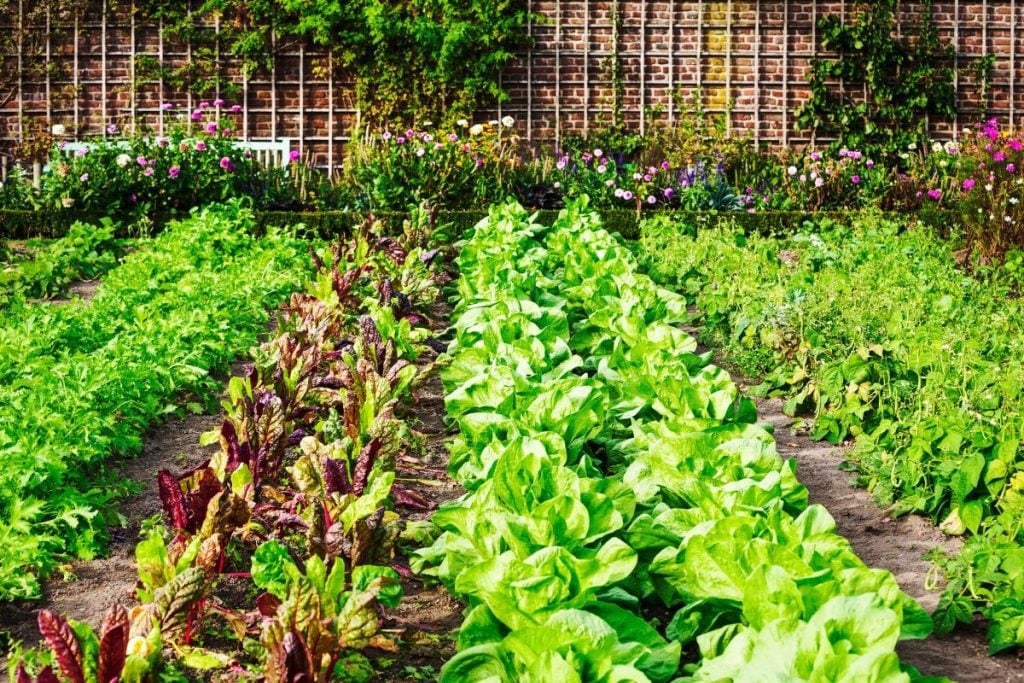
3. A Composting System
Some form of composting is a must for any backyard homestead.
Composting not only reduces the waste that goes to landfills but also enriches your soil and helps you grow delicious nutrient-filled food.
You could start a small compost heap, build a compost bin, get a compost tumbler or set up a worm composter.
Compost tumblers and worm composters don’t need much space, making them ideal for urban areas. They also speed up the composting process, keep animals and rodents at bay and are odor-free.
4. Storage Space
In no time at all, your backyard homestead garden will become productive, and if you don’t share all the excess with friends and neighbors, you will need a way to preserve and store it.
Learning how to preserve using drying, pickling, or canning will allow you to save and enjoy your harvest throughout the year.
However, you will need storage space to keep the dried vegetables and herbs and shelf space for cans or mason jars of preserves.

17 Inspiring Backyard Homestead Ideas
Now that you have some information on homesteading in your backyard, here are some inspirational backyard homestead ideas for your next project.
1. Build a Fire Pit
Building a DIY fire pit is fun and provides a way for you to cook outdoors, move away from fossil fuels and get back to basics.
A fire pit not only creates a warm cozy space to gather around with friends and family but is also very versatile, allowing you to cook the produce you grow in several different ways.

2. Build a Smokehouse
Smoking meat adds flavor, improves the appearance and increases the shelf life of red meat, chicken and fish.
A DIY smokehouse could be a valuable investment if you smoke meat regularly to enjoy, share or sell.
3. Collect Rainwater
Set up a rainwater collection system to collect rainwater to use in your garden.
Using what nature provides is an integral part of becoming self-sufficient, and collecting rainwater can be as complicated or simple as you choose to make it.
If you want to get serious, there are complex, costly systems that you can set up. Alternatively, you could simply put a barrel under your gutter spout or in your yard to catch rainwater.
4. Set up an Aquaponics System
A backyard aquaponics system is ideal for any homesteader. And will allow you to produce plants and fish in an eco-friendly, sustainable way with minimal waste.
Aquaponics systems also need minimal space and can be set up vertically in a small area or indoors.
Read our beginners guide to aquaponics for more information and a step-by-step guide to get you started.

5. Grow Green Manure Crops
Green manure is green, undecomposed plant material used to fertilize the soil. Plants that are grown specifically for use as green manure are called green manure crops.
When using your green manure crops as organic fertilizer, you can be sure you are not adding unwanted pesticides or substances to the soil.
Apart from improving soil quality, green manure crops have many other benefits for your backyard garden.
Find out more in our article What is Green Manure? Everything You Need to Know.
6. Recycle and Make Drip Irrigators
Recycling glass wine bottles and plastic soda bottles and using them to create drip irrigators for your plants is a great way to live more sustainably and use what you have.
If you are using wine bottles, you need to drill a hole through the cork, fill the bottle with water and insert the cork.
Then put the bottle, neck first, into your plant pot or bed, and the water will seep out slowly, keeping the soil moist.
Plastic soda bottles provide more options, and there are three ways you can create drip irrigators using recycled plastic bottles.
7. Create a Container Garden
If you have a small backyard with limited space for plant beds, creating an edible container garden is a great idea.
And if you are a short-term renter, it is a must, as when you move, your edible garden can go with you.
A vegetable and herb container garden looks attractive and you don’t need to spend a lot of money on containers.
You can also use a container garden to grow saffron, and other profitable crops that don’t need much space.
Almost any container can be adapted to hold plants, and milk crates are a great way for beginners to create an edible container garden.
Read our article on How to Plant a Milk Crate Garden to get started.
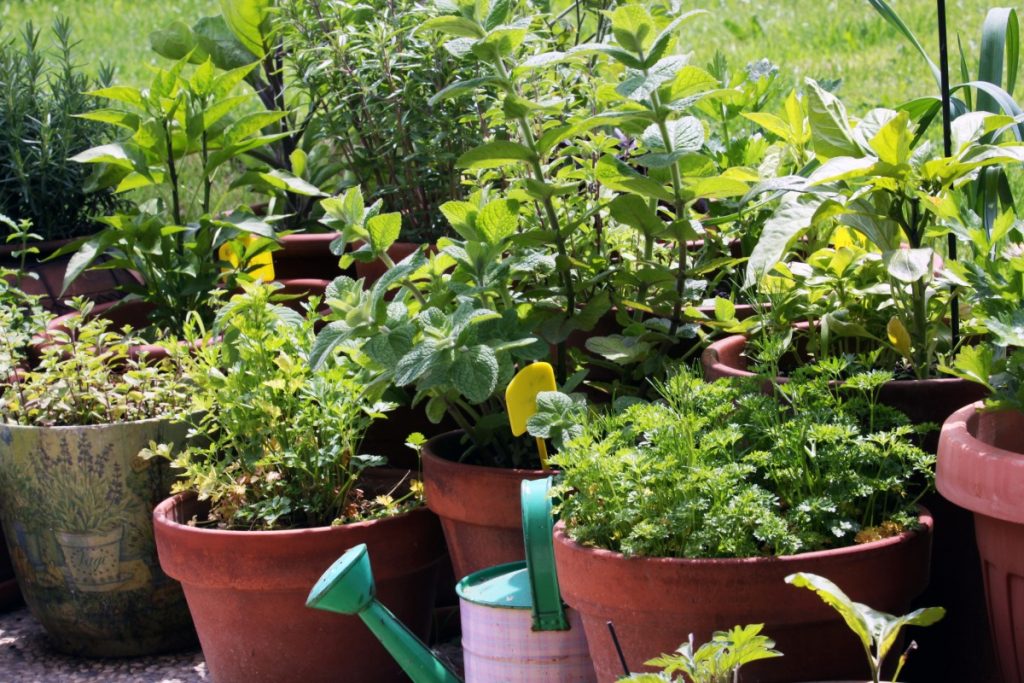
8. Raise Quails
When homesteaders consider poultry for eggs and meat, chickens are often the first thought.
However, not everyone has enough backyard space for chickens, and in some locations, you may not be allowed to keep them.
Quails are a great option. They don’t need a lot of space and provide delicious eggs, although you’ll need three to four quail eggs to equal one chicken egg.
Quail hens are also very quiet, meaning no problems with the neighbors, and you don’t need a rooster to get eggs.
Quails are also an excellent choice for poultry meat and only take around eight weeks to get to an edible size.
However, roosters are noisier than hens, and if you want to breed your quails for meat, you need to consider this.

9. Keep Rabbits
If you only have a small backyard homestead but would like to produce meat, perhaps you should consider small-scale rabbit farming.
Rabbits aren’t noisy, don’t smell or need much space, and can provide an ongoing supply of lean, white meat.
Alternatively, if you are not keen on the idea of raising rabbits for meat, you can raise rabbits for their coats.
Natural fibers are popular, and you can make a profit from your rabbits without harming them.
Another benefit of keeping rabbits is that you can add their droppings to your compost heap or even directly to your garden for a nutrient boost.
10. Create a Greywater System
One way to become more sustainable and use less water is to create a greywater system and reuse greywater.
Greywater is used water from your bathroom basin, shower or tub, kitchen sink, washing machine or laundry sink.
Greywater systems take this water and divert it for use in your garden instead of sending it down into the sewer.
Greywater systems are an effective, energy-efficient way to conserve water and save money as you use your water twice.
11. Grow an Edible Hedge
Hedges are very versatile in a backyard garden and have numerous uses including:
- Barriers for privacy and to filter noise and dust
- Shade as protection from the hot afternoon sun
- Windbreaks to protect fragile plants
- Attractive screens to hide ugly fences or buildings
But you can take your hedges a step further and make them productive as well as functional.
Create your hedges using edible trees and bushes, and you will have a multi-purpose hedge. An edible hedge can serve all the purposes listed above as well as supply you with food.
12. Make Dandelion Wine
A fun idea for your backyard homestead is to learn how to make dandelion wine.
Although nowadays many people consider dandelions to be weeds, it was not always the case.
They used to be extremely popular for their nutritional and medicinal benefits.
So why not save yourself some time, and instead of digging out all the dandelions that pop up in your garden, make use of them.
Every part of the dandelion can be used in food and contain loads of nutrients and vitamins.

13. Build a Squash Arch
If you want to grow squash in your backyard, creating a squash arch is a great idea.
Squash plants grow on long, strong vines that need a lot of space. They can get very messy and crowd out your other vegetables.
Many squashes are also heavy, making it difficult to grow them vertically on a trellis. A squash arch helps solve these problems and adds an attractive focal point to your garden.
A squash arch is essentially a tough arched vegetable trellis, strong enough to carry the weight of a productive squash plant.
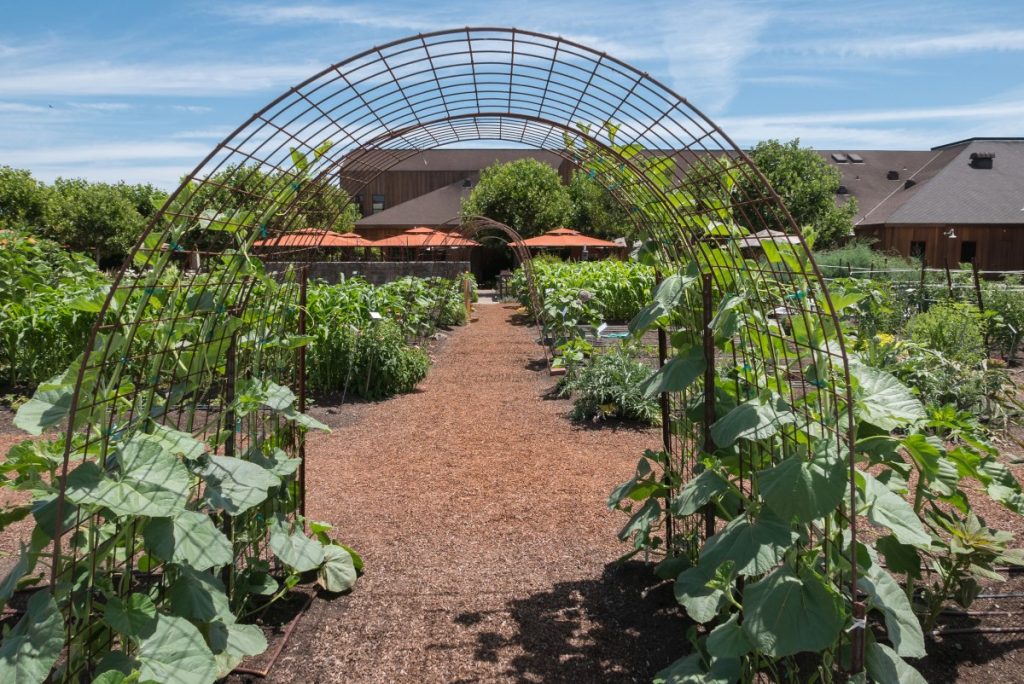
14. Raise Mealworms
Raising mealworms is an easy, low-cost way to get a high-protein food that all types of chickens and ducks love.
A DIY mealworm farm is a fun, easy and inexpensive project that will not only save money but give you happy, productive poultry.
If you have children, this is an excellent project as it’s easy and low maintenance.
Once set up, your mealworm farm becomes a natural, self-replicating food source for your flock.
And if you have surplus mealworms, you can sell them to other poultry owners in your area or for use as fish food in aquariums or aquaponics systems.
15. Grow Plants From Cuttings
Growing plants from cuttings can be a lot of fun and is an inexpensive way to create more plants for your backyard garden.
Once you have learned how to propagate plants from cuttings, you will find yourself taking cuttings whenever and wherever you see a plant you would like in your garden.
Our step-by-step guide to propagating plants using cuttings has more information on how to propagate plants.
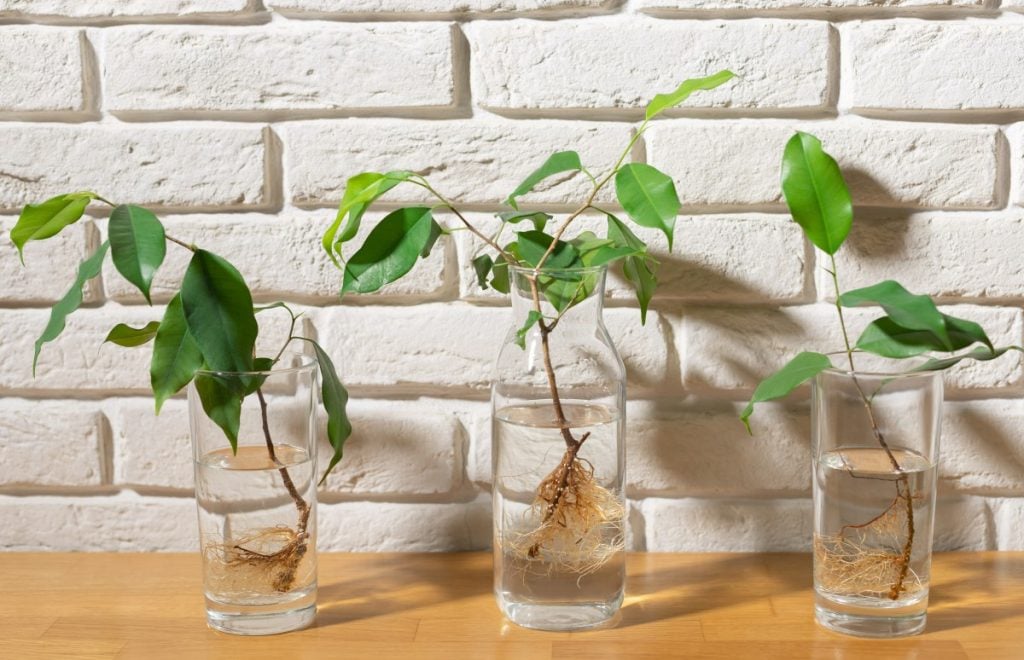
16. Make a Solar Outdoor Shower
Outdoor showers are great for cooling down on hot days and great for those who spend their days gardening.
For a bit of economical luxury, you can use the sun to heat the water for you and enjoy a warm outdoor shower.
Solar showers can be purchased but are also a fun project for DIY homesteaders.
Outdoor solar showers can be anything from extremely fancy to rustic depending on your preference and are often made from inexpensive, repurposed materials.
Off-Grid world has some great solar shower ideas and instructions to make them.
17. Grow Luffas for Dishcloths
The Luffa acutangula gourd is easily grown from seed and produces a versatile, sanitary cleaning cloth. It is sometimes called the smooth luffa or dishrag gourd.
Plant smooth luffa vine seeds in spring, and in fall, you should be able to harvest the gourds.
Luffa vines are vigorous growers, and one or two vines will produce many foot-long gourds.
Once harvested, cut the gourds open lengthwise, take out the fibrous mass inside and thoroughly wash it in hot soapy water to remove any pulp and seeds.
Then dry the luffa in the sun, and you’ll have a dishcloth ready for use. A luffa dishcloth is very durable and easy to keep clean as dirt and grease do not penetrate the fibers.
The other species of luffa gourd, Luffa aegyptiaca, also called the angled or ridged luffa, is used to make sponges commonly used as part of a skincare routine, for exfoliation.
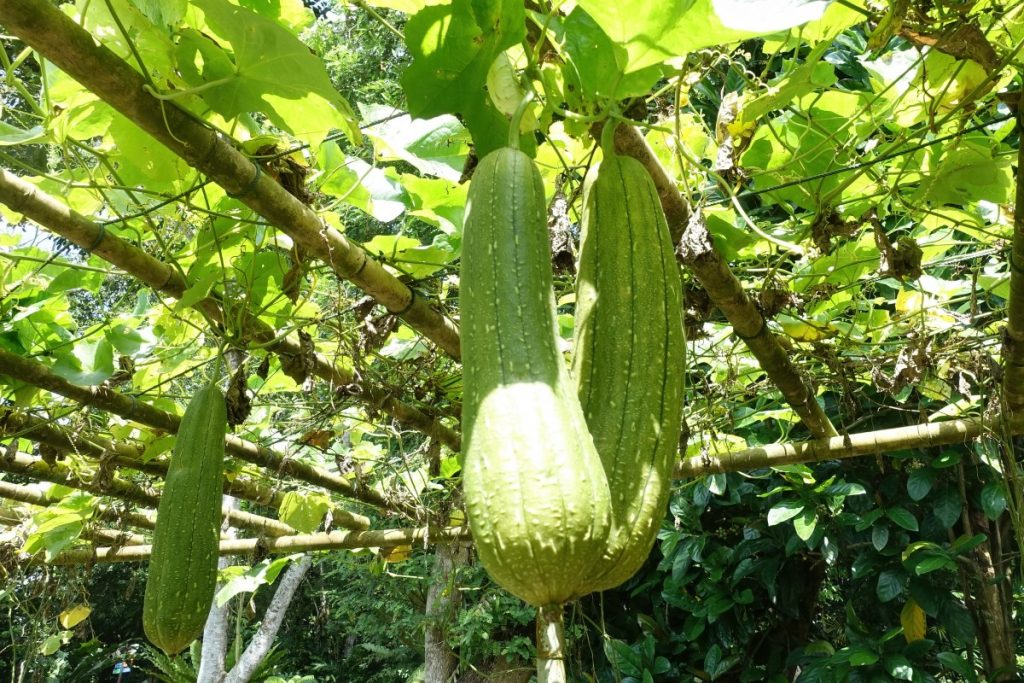
Pros and Cons of Backyard Homesteading
If you dream of living a simple self-sufficient lifestyle, then backyard homesteading may be perfect for you. However, it’s not always easy. Here are some of the pros and cons of a backyard homestead
Pros
1. Easy to Start
It is easy to take small steps to be more sustainable, and you don’t need to move house or buy expensive equipment to get started.
2. Enhanced Appreciation
When you prepare the soil, plant seeds and nurture plants, you acquire a greater understanding and appreciation of nature and your food.
3. Delicious Home Grown Food
It is wonderful and rewarding to sit down to a tasty, nutritious meal made from ingredients that you have produced yourself.
Not to mention the added health benefits of eating fresh, unprocessed produce.
4. Increased Knowledge
Homesteading forces people to grow as a person, think out of the box and learn new skills.
As your homestead grows and you tackle new projects, you will continually acquire new knowledge and skills.
5. Simpler Life
Simplifying life and learning to live with less can be very rewarding, and for many people, it helps reduce the stress of everyday life.
6. A Supportive Community
A big part of homesteading is sharing knowledge and your produce with other homesteaders and your local community.
The result of this is long-term relationships and a supportive community to assist when things don’t go as planned.
7. Money Saving
Reducing consumption of electricity and water, doing things yourself whenever possible and growing food all save you money.
These savings can help you create a lifestyle you both love and can afford.
8. Reduced Waste
Recycling, repurposing used items and composting all play a role in the homesteaders’ journey to become more sustainable and create less waste.

Cons
1. Emotionally Challenging
Dealing with loss is a part of homesteading. It takes trial and error to perfect your homesteading skills.
It can be devastating when all your chicks are taken by a predator or insects consume your entire salad garden overnight.
2. Hard Work
Homesteading requires constant, disciplined work and can sometimes be exhausting even if you only have a small backyard homestead.
Working in the garden and feeding and checking your animals and crops may be something you love, but it’s an everyday task no matter what the weather.
And when you have a bumper crop of fresh fruit or vegetables, it will mean hours in the kitchen preparing and preserving.
3. Unconventional
A backyard homestead garden is nothing like a conventional backyard, and your neighbors may not have the same ideals as you. Which can lead to them getting upset over some of the projects you try.
Sharing your produce and being considerate and friendly will hopefully help to prevent this.
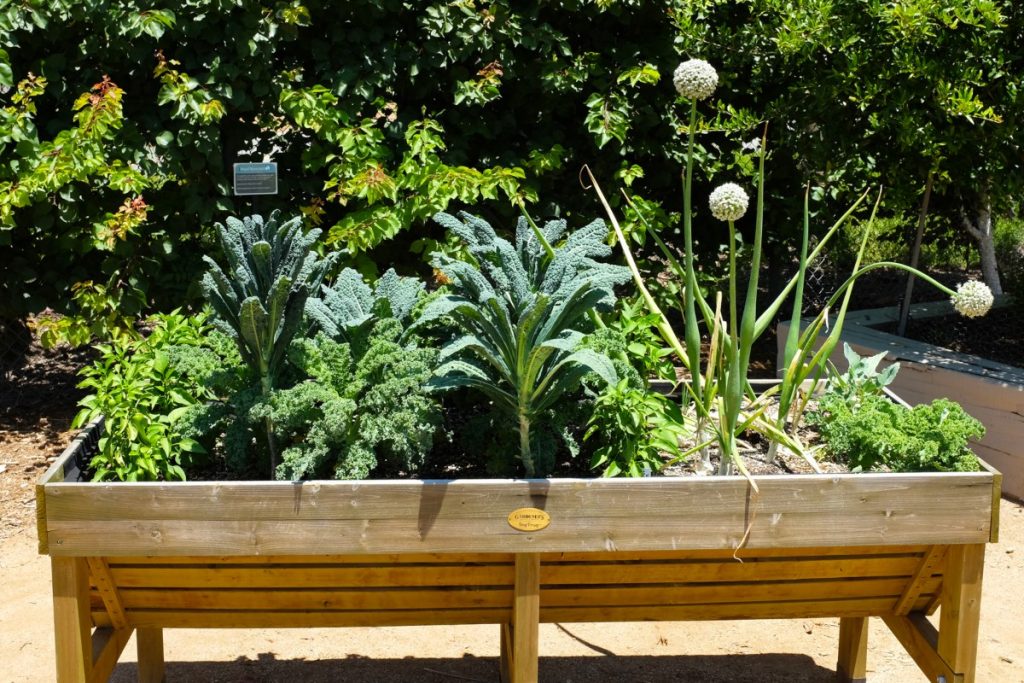
Final Thoughts
Backyard homesteading is about simplifying your life and doing what you can to reduce consumption and your impact on the planet.
There is a never-ending supply of fun and inspiring backyard homestead ideas.
The best thing is to take small steps, be open-minded, and try new things as your resources and situation allow.
As you gain experience and learn new skills, you can also use your backyard homestead to make money.
In our article on how to make money homesteading, we show you 48 of our favorite ways to make money homesteading. Many of them are perfect for a backyard homestead.
